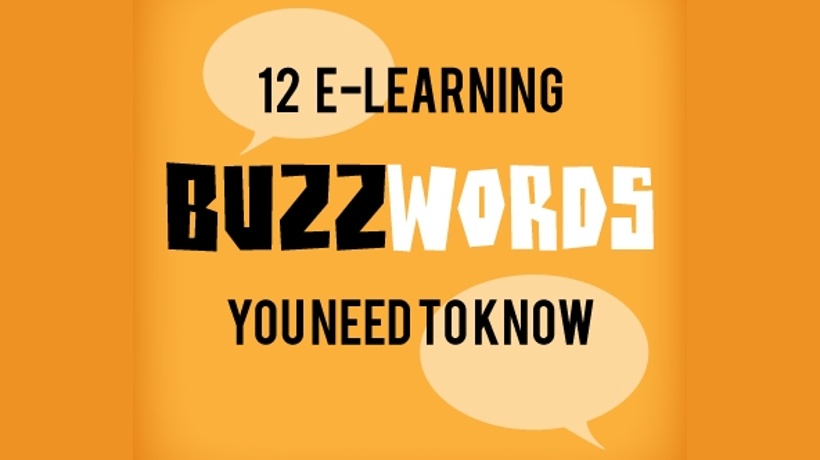Corporate Learning Buzzwords, Or Let’s Cut To The Chase
Learning professionals often differ in approach, design preference, and style, but many agree corporate culture has spawned innumerable corporate learning buzzwords that fill cubicles the world over with the sound of misplaced metaphor, pointless euphemism, and self-important drone. This article examines a few of the most common offenders and attempts to hack away the excess.
1. Cloud
The term, “cloud” describes hosting (saving) content online in a server, usually owned or rented by a business, rather than on individual hardware such as a desktop, laptop, or phone. That’s it! The “cloud” is not an empyreal land of wonder, but the same old idea of saving content in one of the millions of servers that comprise the bones of the internet. Cloud-based solutions allow users to save content and run programs without using space on their own devices.
2. SaaS
Think of SaaS or “software as a service” as a rental (sometimes permanent, depending upon the agreement). Instead of purchasing software on physical medium as in the past, (think CDs or floppy disks if you are really old like me), users pay a service fee to access software hosted online in that happy cloud. This saves space as aforementioned, but also ensures customers are using the most up-to-date version of the software. IT professionals tend to appreciate that they no longer need to download and install software on individual machines one at a time.
3. Agile
This overused word describes a concept similar to its cousin, “agility”. Agile development uses short cycles to create a product one small piece at a time, rather than build something from start to finish before releasing it. This approach allows software developers, learning professionals, and anyone else who chooses to embrace this common sense approach to obtain frequent feedback from users of the product under development which may save time wasted by traveling too far down a wrong path.
4. Asynchronous Training
Four syllables… Sounds academic, but what is it? Traditional classroom experiences include live communication between a learner and an instructor as well as with other students. However, with the advent of online technology, learners may choose from thousands of self-paced courses, commonly constructed as eLearning, that provide participants flexibility to complete them whenever they so desire. In these instances, the learner foregoes live interaction for the sake of convenience. Asynchronous training may still include interactions with other people in the form of message boards, forums, etc. They simply don’t take place in real time. So which is better, asynchronous or synchronous training? Like your children, love them both equally; they bring different qualities to the table.
5. Thought Leader
This term essentially describes a theorist who influences a community’s perspective on a particular subject. Unless you wish to alienate a good portion of your fellow practitioners with a title dripping in self-congratulation, I suggest avoiding it altogether. After all, to what degree need someone influence the community? Which thoughts can one deem worthy of necessitating a “leader”? Don’t attempt to answer these hypothetical questions; it’s not worth your time.
6. Opportunity
A euphemism for “weakness” invented by someone who values obfuscation over clarity for the sake of political correctness. Learning professionals will undoubtedly encounter this term during needs analysis (and their own reviews), but can make the world a better place by not reinforcing its use. Note that Webster’s Dictionary does not even include the corporate world’s interpretation of the word.
Full definition of opportunity:
- A favorable juncture of circumstances <the halt provided an opportunity for rest and refreshment>.
- A good chance for advancement or progress.
7. Gamification
Gamification describes the process of incorporating gaming elements such as rewards, competition, and scoring to drive engagement within a learning experience. The approach often adds value and many including myself find it fun. However, don’t expect it to solve all problems or add gaming elements in all circumstances. Somehow, I don’t envision the sexual harassment training game going over well.
8. MOOC
While it sounds like a term a 1930s gangster might use, MOOC is an acronym which stands for Massive Open Online Courses. Many universities, including some of the most prestigious in the world, offer free courses in topics ranging from software engineering to the humanities on a variety of platforms. I recommend starting by exploring Coursera which includes a large library of options.
This list of corporate learning buzzwords represents only a single bucket in the endless ocean of offensive business terminology (ahhhhh, ridiculous metaphor), so feel free to record your own pet peeves in the comments section. But don’t forget to provide a succinct explanation or really, you’re just adding to the problem. Happy hunting!









